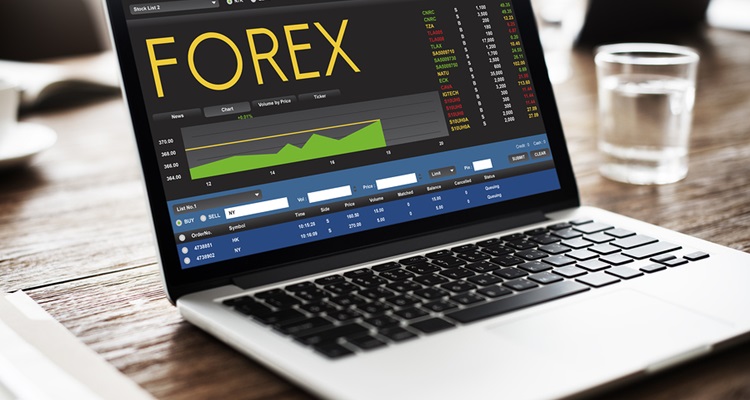Forex trading, also known as foreign exchange trading, is the buying and selling of currencies on the global market. It is the largest and most liquid financial market in the world, with a daily trading volume exceeding $6 trillion. Unlike stocks or commodities, forex trading operates 24 hours a day, five days a week, allowing traders to participate at any time.
If you’re new to forex trading, this guide will walk you through everything you need to know—from the basics to advanced strategies—in a simple, easy-to-understand way.
1. What Is Forex Trading?
Forex trading involves exchanging one currency for another with the goal of making a profit. Currencies are traded in pairs, such as EUR/USD (Euro/US Dollar) or GBP/JPY (British Pound/Japanese Yen). The first currency in the pair is the base currency, and the second is the quote currency.
How Forex Prices Work
- If the EUR/USD pair is priced at 1.1000, it means 1 Euro = 1.1000 US Dollars.
- If the price rises to 1.1050, the Euro has strengthened against the Dollar.
- If it drops to 1.0950, the Euro has weakened.
Traders aim to buy low and sell high (or sell high and buy low in case of short-selling).
2. Why Trade Forex?
Forex trading offers several advantages:
High Liquidity – The forex market is the most liquid, meaning you can enter and exit trades quickly.
24/5 Market – Unlike stocks, forex is open 24 hours a day (except weekends).
Leverage – Brokers offer leverage (e.g., 50:1 or 100:1), allowing traders to control large positions with small capital.
Low Costs – Most brokers charge minimal fees (spreads or commissions).
Profit in Rising & Falling Markets – You can trade both upward (buy) and downward (sell) trends.
However, forex trading also carries risks, especially due to leverage, which can amplify both profits and losses.
3. How to Start Trading Forex Online
Step 1: Choose a Reliable Forex Broker
Not all brokers are trustworthy. Look for:
Regulation (FCA, ASIC, CySEC, or SEC-regulated brokers)
Low spreads & commissions
Good trading platform (MetaTrader 4/5, cTrader, or proprietary platforms)
Fast execution & no requotes
Good customer support
Step 2: Open a Trading Account
Most brokers offer:
- Demo Account (Practice with virtual money)
- Live Account (Real money trading)
Start with a demo account to practice before risking real capital.
Step 3: Learn Basic Forex Terms
- Pip (Percentage in Point) – The smallest price movement (e.g., 0.0001 for EUR/USD).
- Spread – The difference between the buy (ask) and sell (bid) price.
- Leverage – Borrowed capital to increase position size (e.g., 100:1 means $1 controls $100).
- Margin – The deposit required to open a leveraged position.
- Lot Size – Standard lot = 100,000 units, Mini lot = 10,000, Micro lot = 1,000.
Step 4: Develop a Trading Strategy
Successful traders follow a plan. Common strategies include:
A. Day Trading
- Opening and closing trades within the same day.
- Uses short-term charts (5-minute, 15-minute).
- Requires quick decision-making.
B. Swing Trading
- Holding trades for days or weeks.
- Uses 4-hour or daily charts.
- Less stressful than day trading.
C. Scalping
- Extremely short-term trades (seconds to minutes).
- Aims for small, frequent profits.
- Requires tight spreads and fast execution.
D. Trend Trading
- Follows long-term market trends.
- Uses moving averages, trendlines, and momentum indicators.
Step 5: Use Risk Management
- Never risk more than 1-2% of your account per trade.
- Use stop-loss orders to limit losses.
- Avoid over-leveraging (High leverage can wipe out your account fast).
- Diversify trades (Don’t put all capital into one currency pair).
4. Fundamental vs. Technical Analysis
A. Fundamental Analysis
This involves studying economic factors that influence currency values:
Interest Rates (Higher rates attract foreign capital, strengthening the currency).
Economic Data (GDP, employment reports, inflation).
Political Stability (Elections, policies, and geopolitical events).
Central Bank Policies (Federal Reserve, ECB, BoJ decisions).
B. Technical Analysis
This involves analyzing price charts and patterns:
Support & Resistance (Key price levels where trends may reverse).
Moving Averages (SMA, EMA to identify trends).
Indicators (RSI, MACD, Bollinger Bands for momentum and volatility).
Candlestick Patterns (Doji, Hammer, Engulfing for reversals).
Best Approach: Combine both fundamental and technical analysis for better accuracy.
5. Common Forex Trading Mistakes to Avoid
Trading Without a Plan – Emotional decisions lead to losses.
Overleveraging – High leverage can destroy accounts quickly.
Ignoring Stop-Losses – Letting losses run is dangerous.
Chasing Losses – Revenge trading leads to bigger losses.
Overtrading – Too many trades increase risk and stress.
6. Best Forex Trading Platforms
- MetaTrader 4 (MT4) – Most popular, user-friendly, with automated trading (Expert Advisors).
- MetaTrader 5 (MT5) – Advanced features, more indicators, and asset classes.
- cTrader – Great for ECN trading with tight spreads.
- TradingView – Excellent for charting and analysis.
7. How to Stay Disciplined in Forex Trading
Stick to Your Strategy – Avoid impulsive trades.
Keep a Trading Journal – Track wins/losses to improve.
Control Emotions – Fear and greed ruin traders.
Take Breaks – Avoid burnout from over-trading.
Conclusion: Is Forex Trading Right for You?
Forex trading can be profitable but requires education, discipline, and risk management. Start with a demo account, learn the basics, and develop a solid strategy before risking real money. Avoid get-rich-quick schemes—consistent profits come from patience and smart trading.
If you’re willing to put in the effort, forex trading can be a rewarding way to generate income online. Happy trading!


